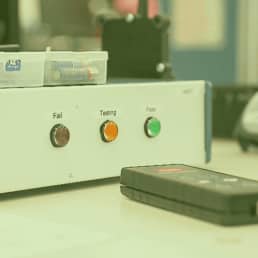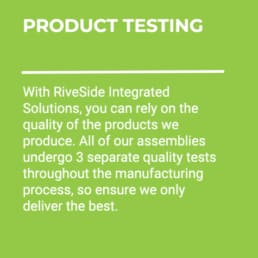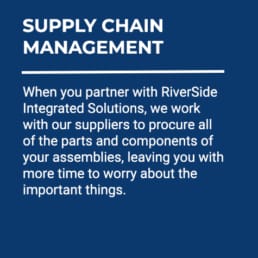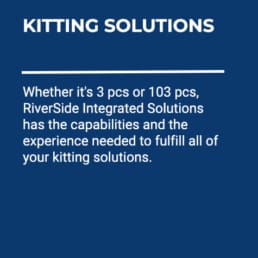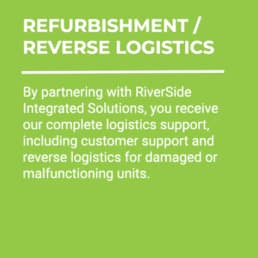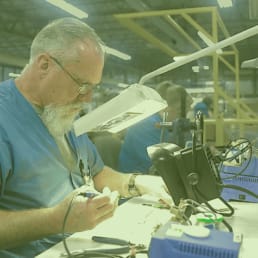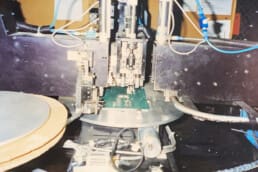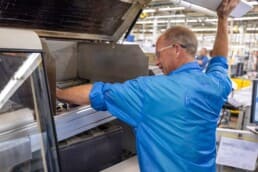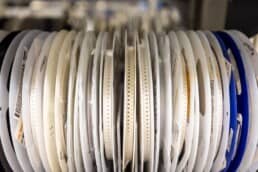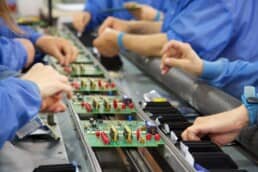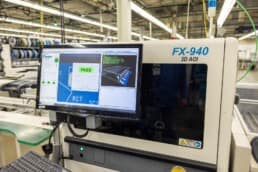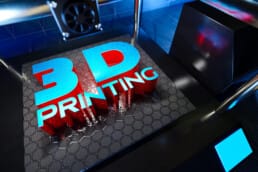Printed circuit boards (PCBs) are essential components in a wide range of electronic devices. They provide the foundation for electrical connections between components. However, PCBs are also susceptible to a number of environmental factors, including moisture, heat and vibration. These factors can cause PCBs to fail, which can lead to costly repairs or even the complete failure of an electronic device. Potting and coating are two methods that can be used to protect PCBs from environmental damage, often referred to jointly as ruggedization.
Potting or encasement involves encasing the PCB in a protective resin, while conformal coating involves applying a thin layer of protective material to the surface of the PCB. Both potting and coating can provide a number of benefits in terms of PCB protection.
Potting vs. Conformal Coating
Potting offers a number of advantages over conformal coating. First, potting provides a more complete barrier against environmental factors. The resin can completely encapsulate the PCB, which helps to prevent moisture, heat and vibration from reaching the components. Second, potting can help to dissipate heat more effectively than coating. This is because the resin can conduct heat away from the components, which can help to prevent them from overheating. Finally, potting can help to protect the PCB from physical damage. The resin can act as a shock absorber, which can help to prevent the PCB from being damaged if it is dropped or otherwise subjected to physical force.
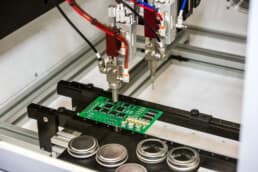
At the same time, conformal coating offers a number of its own advantages. First, coating is a less expensive option than potting. Second, coating is a more versatile option than potting. Coating can be applied to a variety of surfaces, including PCBs, metal parts and plastic parts. Third, coating can be used to provide a variety of finishes, including matte, gloss and metallic finishes.
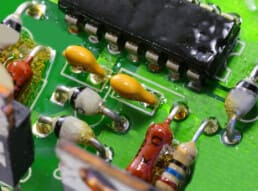
To decide whether an assembly needs conformal coating or potting to help protect it, you will need to consider a number of factors:
• Protection from environmental hazards:
Potting and coating can help to protect PCBs from moisture, dust and other contaminants. If an assembly will only ever be exposed to such materials residually, it may only need the comparatively thin conformal coating to protect it. But if the assembly is likely to be completely submerged in water, for example, it may need a potting solution to ensure the electrical components are completely protected.
• Protection from physical damage:
Potting and coating can also help to protect PCBs from physical damage, such as shock and vibration. Similarly, to environmental hazards, whether an assembly will need potting vs conformal coating will depend on how much physical force, such as shock or vibration, the PCB is likely to be exposed to. Potting will provide more comprehensive protection, while coating will offer a lighter-weight alternative for assemblies that won’t be as exposed to physical damage.
• Improved electrical performance:
Potting and coating can help to improve the electrical performance of PCBs by reducing noise and interference. This can be important in applications where the PCB is used in sensitive electronic equipment such as radios or other telecommunication equipment. Here potting will do a better job of completely isolating the electronic components, while coating is reserved for those that don’t need to be so thoroughly isolated.
For assemblies in need of serious protection, potting and coating are often used together to provide the best possible protection. You will need to carefully consider which of these protections, if any, your PCB will need. But that isn’t the only decision you’ll need to make. The type of potting or coating material your PCB needs will depend on the specific application.
Types of Potting and Coating Materials at RIS
There are a variety of potting and coating materials available, each with its own advantages and disadvantages. At RiverSide Integrated Solutions (RIS), we offer a variety of potting and coating services for PCBs. Types of materials used for potting and coating fall into one of two categories. Room Temperature Vulcanizing (RTV) compounds which, as the name implies, will cure at room temperature over a period of time. Often with RTVs, heat may be applied to expedite the curing process. The other type of compound used at RIS is thermosetting. These compounds will not cure without heat being applied as a catalyst for the curing process.
These include:
• Silicone
Silicone can be used for both conformal coating and potting. It is a polymer that is applied in a thin sheet as a liquid for conformal coating to the surface of the PCB or injected into a mold for potting. Although many silicones require either a heat or acid catalyst to cure, the silicone compounds used at RIS are RTV compounds.
• Urethane:
Urethane is a type of thermosetting resin that is often used for both potting and conformal coating. It is a polymer that is applied in a thin sheet as a liquid for conformal coating to the surface of the PCB or injected into a mold to fully encapsulate the assembly for potting. The urethane compounds used at RIS are RTV compounds.
• Epoxy resins:
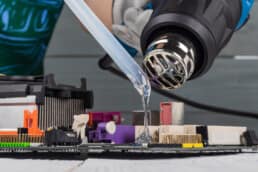
hardener. These are mixed together and then injected into a mold to create an encapsulation around a PCB for potting. Some epoxies can be thermosetting, but the epoxy compounds used at RIS are RTV compounds.
• Polyurethane resins:
Polyurethane resins are a type of resin that is often used for coating. Polyurethane is a polymer made up of two monomers, isocyanate and an alcohol. These are mixed together and then injected into a mold to create an encapsulation around a PCB for potting while many polyurethane compounds are thermosetting, the polyurethane compounds used at RIS are RTV compounds.
The Right Potting or Coating for Your Needs
The right potting or coating material for your needs will depend on a number of factors, including the environment in which the PCB will be used, the level of protection required and the cost. With so many choices and variations, it can be hard to know which compound and protection technique is the right combination for your assembly. That’s why we have a team of experienced engineers who can help you choose the right solution for your assembly.
Contact us today to learn more about manufacturing with RIS and see how we can help you protect your PCBs.
About RiverSide Integrated Solutions
RIS is an advanced contract manufacturer providing robust solutions in circuit board assembly and product assembly. We employ more than 350 people and provide services to OEMs worldwide. We operate two state-of-the-art manufacturing facilities within the US.
With all of the choices in contract manufacturers out there, we know it can be challenging to find someone who understands your business model and has your best intentions in mind. RIS has always proven to be a win-win-focused relationship.
As your one-stop shop, we have the capabilities, capacity, quality assurance standards and resources to support all of your manufacturing needs. We understand that supply chain management is complex and very time-consuming, so we urge our customers to utilize us in the fullest capacity.
Our total-package solutions include:
- Extensive supply-chain network
- Full box-build assembly
- Dedicated Program Team
- Warehousing, kitting and drop-shipping capabilities
- Reverse logistics
- Flexible order fulfillment
- Scalability to meet your needs
Contact us today at (507) 523-3220 to see how we can help with your manufacturing project, or click contact us for a quote.



